Christopher Hector looks at the world-wide furore over a genetic defect…
It was the British born, US based, dressage instructor and Warmblood breeder, Mary Nuttall who first alerted the world to the threat of Warmblood Fragile Foal Syndrome, when the foal she had been eagerly awaiting was born in March last year. Almost immediately there was something wrong, something that baffled the experienced breeder, and her experienced vet. The mare and foal were rushed to leading US vet clinic, Texas A & M, where there was nothing that could be done for the foal, but a genetic test revealed WFFS and then things started to explode, a wildfire of concern lit by that marvelous hysteria machine, social media.
Yet this was far from the first time the condition had been observed. German vet and horse breeder, Kareen Heineking-Schutte recalls – in an op/ed on eurodressage – first hearing about the condition in a veterinary examination in 2000: “I admit this bit of active knowledge did not survive its vet school exam deadline… It was thus pushed down into the abyss of unused information for the next 15 years during which I didn’t hear a single noise about it, despite being a vet and running a stud farm in the heartland of sport horse breeding.”
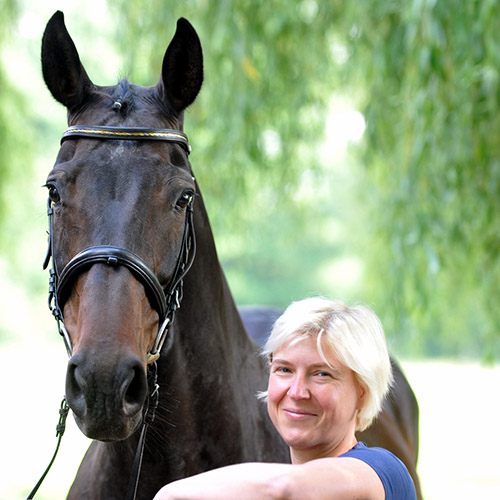
“Fast forward to 2015 when I met Dr Bärbel Gunreben at a convention and learned about the study she and her team had conducted in 2012. She mentioned that Laboklin had been offering commercial testing for this defect starting in 2013, and that she was surprised they had seen little to no interest from Warmblood breeders and registries which she attributed to the low quota of statistically one in 400 foals being affected based on the 9.4% prevalence of carriers they had found in her work.”
Again Karen once again filed the info away since she had not encountered a single clinically affected foal, that is until, “Hilltop went public about Sternlicht being a carrier in the wake of Mary Nuttall losing her foal. I have since tested all my mares and learned that two of them are carriers which I immediately published in the Facebook WFFS group.”
At first the reaction in Europe was a little along the lines of hysterical American ladies, we’ve seen them before, but this one was not going to go away. By May 1, it was established that Everdale was the sire of the unfortunate foal, and Dutch Stallion keeper, Gert-Jan van Olst issued a press release:
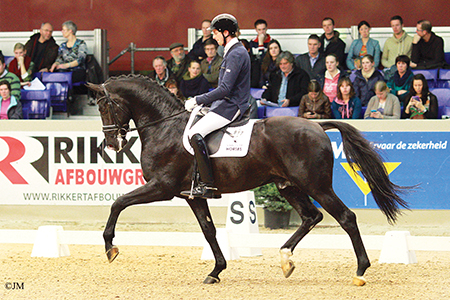
Everdale – he was Holland’s most popular stallion, and a WFFS carrier…
“Van Olst believes that the scale of the problem is relatively small, because in all those years almost 1000 foals by Everdale were born and there were never problems. Nonetheless Van Olst takes this seriously and wants to know more about the influence of the WFFS gene on breeding. It will be important to see which position KWPN will be taking, because most likely Everdale is not the only carrier in the European stallion book.”
Van Olst offered all its breeders who wanted to breed to Everdale in the 2018 season a free WFFS testing.
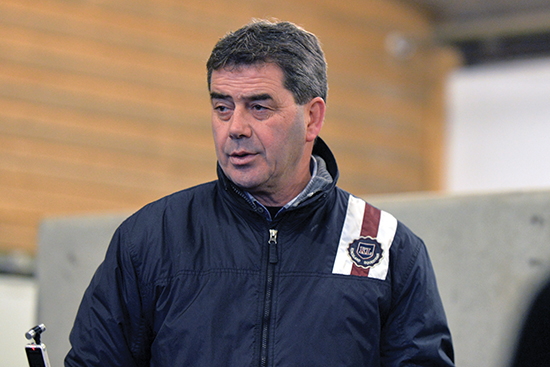
“If the mare turns out to be no carrier after the test, there is no problem. If the mare is a carrier, there is a heightened risk and the breeder will have the choice to take the risk or choose another stallion, ” Van Olst announced.
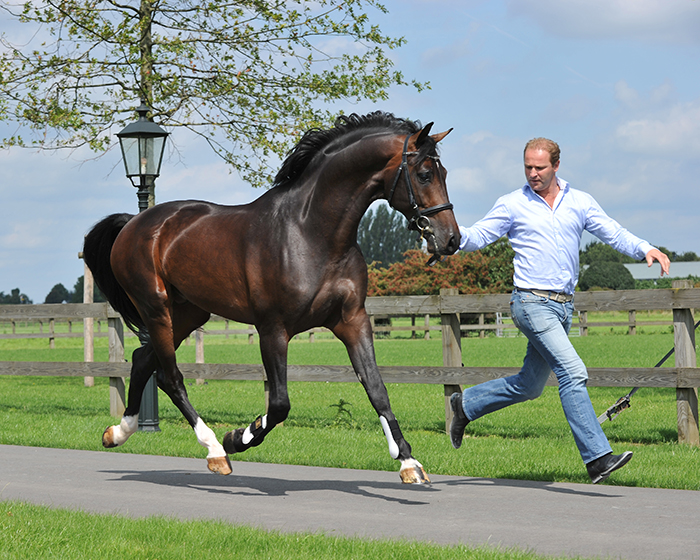
Joop van Uytert and the stallion Amazing Star
Some stallion keepers were quicker to read the way the wind was blowing, and moved quickly to allay fears, not to say hysteria. One of Holland’s largest stallion owners, Joop van Uytert confirmed on May 8 that all his stallions would be tested.
“I don’t know how long it will take before we have the results,” Van Uytert told Eurodressage. “I do this on my own initiative, but I would have preferred that this was European regulated for all breeding stallions.”
At least in Holland action was being taken. A KWPN statement of June 12, named ten positive stallions: Everdale, Guardian S, Habanna, Inclusive, Indian Rock, Inspire, Jack, Jubel ES, Regino and Total U. S. This was adjusted to 11 on July 26, presumably to take into account Apache being re-tested and found positive.
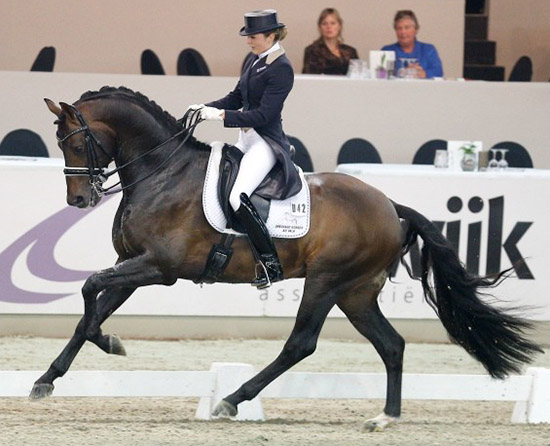
Apache – added to the list…
In October 2018, Horses.nl asked three experts their views on the subject.
Wiebe Yde van der Lageweg, is one of the three children of VDL stud founder, Wiepke van der Lageweg, who today assists their father in running one of the world’s largest stallion stations, VDL.
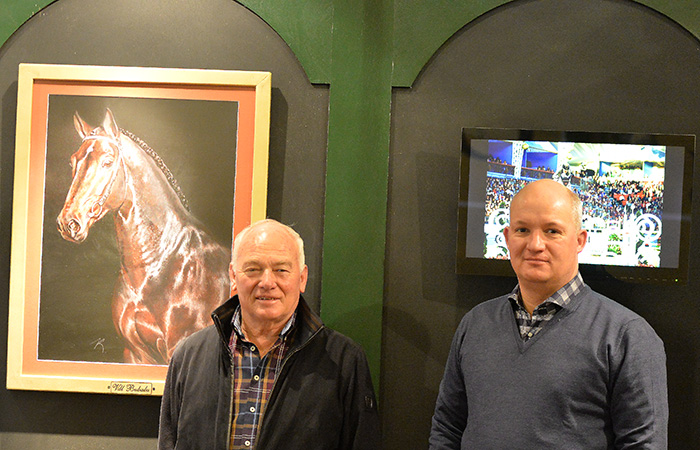
Wiepke van der Lageweg and his son, Wiebe Yde
Wiebe told Horses.nl that the KWPN had acted correctly, and like a number of prominent stallion keepers, he thought the “whole problem had been blown up by the press, and by ignorance.” He promised that all their VDL stallions would be tested and the results published: “then it cannot be more clear, the breeder can make their own decision. However it is not reasonable that stallions are the only ones tested, mares can also be carriers. It is more important to breed a good horse and not give these things more weight than the quality of the horse.”

Ralph van Venrooij is the head of the horse section of LTO breeding centre, which deals with everything from chickens to wheat, pigs to apples, and he is also a member of the KWPN. “I think at the moment the KWPN has taken sufficient action concerning WFFS. It has been discussed at the breeding council and the conclusion was that there would be no stallion selection on the basis of WFFS status, but that the status of the stallion must be known, and published. With this information our studbook does what it has to – inform breeders so they can make an appropriate decision in their choice of stallions.”
“It is only when the stallion is licensed, that he can have an effect on breeding, before this, to test 600 stallions doesn’t make technical sense. It is not even a representation of all the population because it has been pre-selected. I presume that the stallion preparers will test for OCD and now WFFS before the licensing. It is important to map the presence of the gene, but then you will also have to test all the active mares. Now it is WFFS, but we should expect in the future more genetic defects will be found – how far can we, and should we, select on that? The commercial effect in relation to the sale of foals is definitely present at the moment, whether that is justified or of secondary importance.”
“The chance of a male foal growing up to be a breeding stallion is very small. We should not forget that we breed for sport, so let’s select on that basis as well. As an aside, at the University of Utrecht, no foals have been diagnosed with WFFS.”
Horses-nl also questioned Lars Gehrmann from the Trakehner Verband. He felt that the good news was that “in Trakehner breeding we realise after many investigations, that the problem is quite small. But we are doing the same as the other German studbooks. All candidates for the stallion licensing have to be tested and the information will be published in the 2019 stallion catalogue for every stallion, whether free of the gene, or a carrier and therefore only to be used on WFFS free mares.”
“If there is a lot of pressure, we believe that the majority of the results for German stallions will be published. There is frozen semen available from stallions that are no longer alive, and because it is not possible to take blood or hair samples, there will be no results for them.”
“We also support the research being undertaken by the University of Göttingen, that is being done at the request of the German studbooks. If we have to adapt our strategy as a result of new findings we will, and we will keep our breeders informed.”
Over in Oldenburg, there was a difference of opinion, ranging from Paul Schockemöhle’s view that it was a media beat-up to breeding director, Wolfgang Schulze-Schleppinghoff’s call for more openness, the rift made rather more poignant by the fact that a new PSI/Helgstrand starry stallion, Global Player was rumoured to be positive.

According to Schulze-Schleppinghoff: “I wish I could talk openly about it, so that we don’t have to turn WFFS into something secret and exciting. But unfortunately there are a few stallion owners in Oldenburg who try to stop disclosure of WFFS with all their might. It’s my opinion that you have to be open about it, and by doing so you take away a lot of the worries. This also counts for the health status on X-ray of the stallions. I would want to be more open about that too. If you just make these things public in all serenity, it will be less inflated.”
Eventually, Schockemöhle’s US representative identified the PSI carriers, and the new EU breeding regulations introduced in 2019 now required all stallion owners to test their stallions, and to make the status of their horses known.
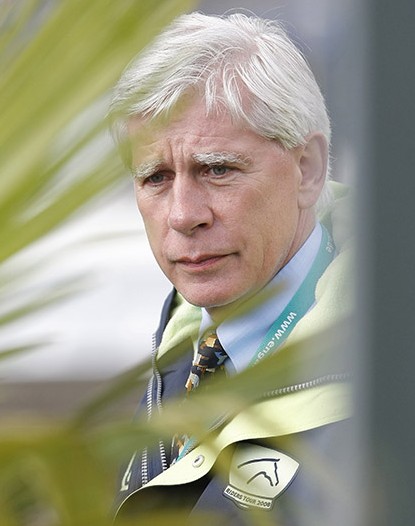
Paul Schockemöhle remained unrepentant, offering €10,000 to the owner of any foal that was born with the disease, he issued the following statement:
“Of course all our stallions have been tested. The results can be found on our website www.schockemoehle.com or requested via phone. We would like to emphasise that there’s no reason to panic!”
“More than 10,000 foals were born at Lewitz Stud during the course of Paul Schockemöhle’s breeding program, that’s not including our clients’ foals. Not a single one of these foals showed any WFFS. The likelihood of this is therefore minimal. It is so minimal in fact that Paul Schockemöhle also pays a compensatory payment of Euro 10,000 to the breeder, who suffers the death of a foal from WFFS as scientifically proven by a veterinary university. The amount is not to be understood as an indemnity, rather as a sign that the current belief caused by the extensive media hype that WFFS is an epidemic and that WFFS-carrying sires have to be excluded from breeding, is absolutely exaggerated.”
And yes, Global Player came up positive…
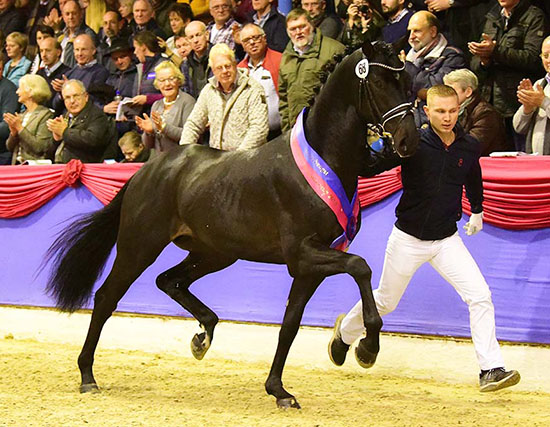
Global Player – positive
This didn’t wash all that well with some in Holland, which has always been stricter in its health requirements than the Germans. Sometime KWPN breeder of the year, Emmy de Jeu was outraged in her facebook post:
“Actually I’m shocked that PSI brushes WFFS away as a defect, over exaggerated by the media (of course) put down as a plague and that “only 10%” of the population is infected.”
“Aside of the devastating effect a stillborn, aborted or deformed foal has on us breeders, it’s also our duty as breeders to take care that we don’t create any more carriers!”
“And by using a stallion that is a WFFS positive on our non-carrying mares we still can create another carrier, 50% chance!”
“Do we want to ban WFFS out of our population?”
“If so, we shouldn’t be making a combination of WFFS/NN in my opinion…”
Schockemöhle found support from another pillar of Oldenberg breeding, the Sosath family’s stud, Gerd Sosath wrote:
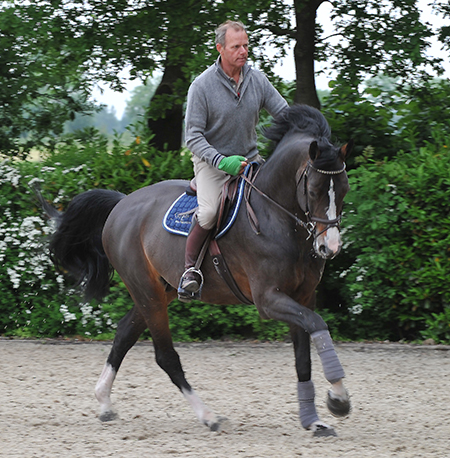
Gerd Sosath – he’s not going to test his mares…
“Our family business is about trust and transparency. We too have tested our stallions for WFFS, but first I would like to point out the following:
“We welcome the research being done for the welfare of the horse. In the special case of WFFS however, the publication of the latest research has only led to confusion and panic within the breeding community. After many years of experience and the births of hundreds of foals we have not been subject to a case of WFFS. Neither have we noticed a statistical correlation between the pregnancy rates of carriers and non-carriers. We are fighting Herpes and Rhodokokken infections in our herd and feel relieved that veterinary progress and care now allows us to save the majority of foals.”
“Sadly the communication around WFFS has been delivered so poorly that confused breeders are taking their very best mares out of the breeding program just because they are carriers. How much would the breeding industry have missed out on if breeders had not used WFFS-positive stallions in the past?”
“I suggest testing your mare if you are unsure. If she proves to be a carrier then it is recommended to only use stallions that have tested negative to WFFS. Only when two carriers (mare and stallion) are mated do we see a risk of WFFS actually occurring. We shouldn’t lose sight of the original purpose of breeding. Personally I won’t be testing our mares and will continue to breed as before: with the stallion that I feel is best suited to each individual mare. That’s our recipe for success.”
“There are countless genetic changes, the WFFS discovery is only at the beginning of continued research. I believe that in years to come we will be able to test for many more genetic defects. Does that mean that in the future we will only ever pair so-called ‘matching’ genes? Has the breeding industry not gone through other hypes before, caused by improved research and technology? Today’s x-rays have a different focus than 20 years ago for example. Back then the navicular bone was a deciding factor, then the quality of a horse was determined by bone chips and today minimal changes in the cervical spine that are only visible with the latest technology influence the sale of a horse. But are horses with perfect images superior? I prefer to look at the actual clinical constitution and the physical horse rather than the x-rays.”
“I have had intensive discussions with Paul Schockemöhle about this topic and totally agree with his recent statement. We have acknowledged the WFFS topic and can now return to focus on the true criteria for choosing a stallion.”
next we looks at the Hanoverians
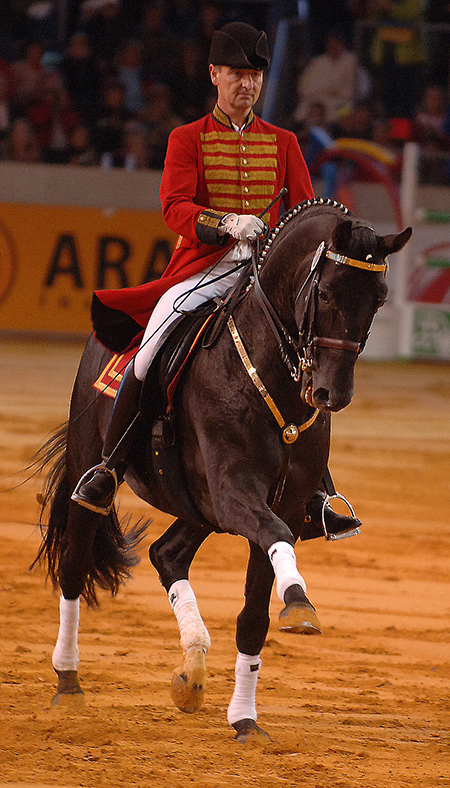
Don Frederico – the biggest loss?
Hanover took a real blow when two of their top Celle based stallions, Don Frederico and Londonderry, along with lesser lights, Don Index, Londontime and Quaterhall, tested positive, while across the border to the north in Holstein, all the famous sires came up clear. Hanoverian breeding manager, Werner Schade conceded that it was a loss for them…

“That hurts, all the big boys, but for me, how this problem was dealt with was a little bit hysterical, because we don’t have so many verified cases of this disease and we don’t have data on possible abortions. But with Londonderry and Don Frederico, there is no history of a higher rate of abortions and missed pregnancies. They had a lot of mares, and if there had been a high rate of abortions then we would know that, the breeders would tell us.”
“We think we have to be careful. So far we will not exclude carriers from the breed, we will license them – we have to inform the breeders, this is a carrier and if you have a mare that is not a carrier, then it is no risk to use a carrier stallion, there is a risk of 25% that the foal might be a new carrier, but still healthy.”
Aren’t we running the risk of adding more and more carriers to the gene pool, they might not themselves be unhealthy, but you are perpetuating the gene within your population, and there is some argument that the alternative is just to breed it right out of the population…
“We don’t think that we have the knowledge, the situation has not developed enough to make this sort of decision. While I was here in Australia for the first ever licensing, I had a good discussion with some of the breeders, and the first thing for them is transparency and information, so the breeders can make a decision. Many breeders were successful with using Londonderry or Don Frederico, and we are not breeding to breed breeding horses, we are breeding to breed riding horses. Maybe our strategy will change in the future, but we can only make decisions based on facts.”
Do you think the breeders will continue to use Don Frederico? I was talking to a Dutch equestrian journalist, and he said he thought the carrier stallions in his country would get no mares… Is it the same in Hanover?
“I think in the short time, the positive stallions will have a problem. In Germany over the past year the thinking has changed. It was a big topic in the beginning of the year, then in the second half of the year, it was the first time at our licensing that we tested all the accepted stallions and we had five stallions that tested positive. We didn’t take them out of the licensing because we licensed only on quality and one of the five was a premium stallion, and sold for a good price. During the licensing, there was not a big discussion about this topic, I think people have learned to deal with the situation – they have checked their mares now – and they are not so concerned about it. But in the short term, I think it will be hard for positive stallions to attract mares, this is what the stallion owners tell us.”
Do you have a nice non-carrier son of Don Frederico?
“We do have one, and I hope he will come back into breeding. He was a premium stallion three years ago, he is not breeding, he is in a training stable, and so far as I know, he is not a carrier. He is six years old and he will be tested this year, but I called the owner and said, you have an interesting Don Frederico and we would like to keep the line going because Don Frederico was very valuable for the Hanoverian breed and we would like to find a way to keep this line. The same with Londonderry.”
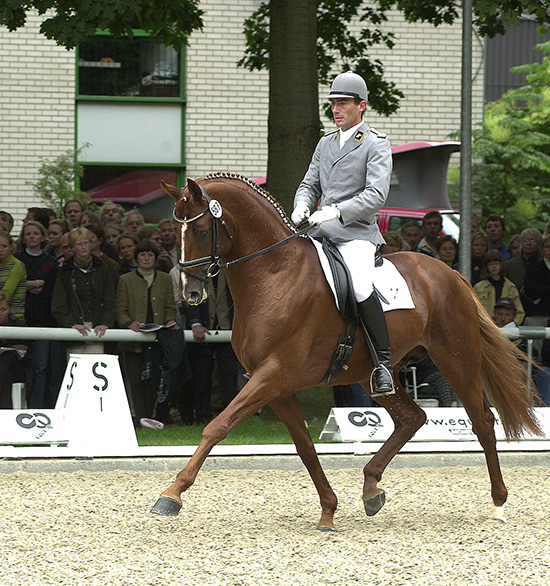
But with Londonderry when we first saw him we thought, this is the most wonderful stallion, but to be ruthlessly honest, as a sire he has not been a huge success…
“Yes, with direct offspring in sport you are right, but his value for the breeders is on the mother’s side. One example is the World Champion stallion, d’Avie, if you look at him, he is very close to Londonderry, and we have many good horses with Londonderry mothers, they give type – I think the whole Lauries Crusader bloodline will have its high value on the mother’s side in the future.”
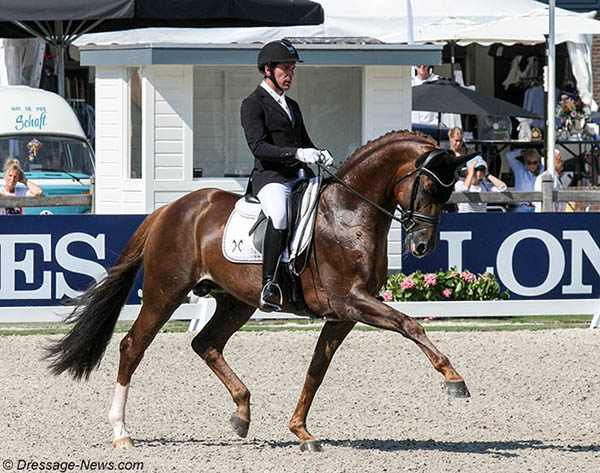
d’Avie – the Londonderry comes through (photo – Ilse Schwartz)
Across the border in France, they are taking a rather more laid back approach to the issue, sure it’s there, but right now we are not going to get too excited about it. Listen to Arnaud Evain, whose GFE stands France’s largest group of Sporthorse Stallions:
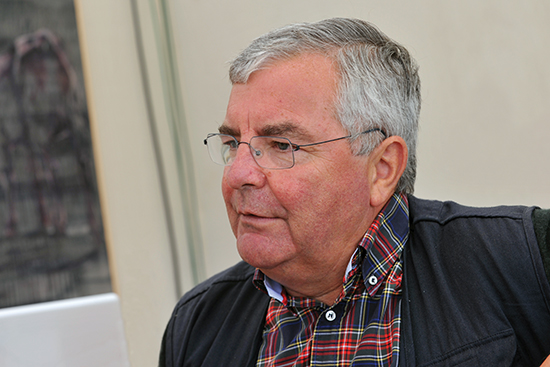
“The discussion about the transmission of WFFS is an issue, but the disease is not an issue. We have no official statistics on the losses caused in France by this defect of collagen quality related to a gene, but it’s definitely a very small number. So far none of the vets I asked reported having seen this syndrome in their entire career.”
“If, as reported, the prevalence of the gene is between 6 and 11%, it should have been responsible for many more deaths caused by this WFFS than has been observed. That means that some other mechanisms are involved in the appearance of the syndrome.”
“It reminds me the discussion about OCD, when some people pretended to have discovered the responsible gene… Years after, everybody now accepts that it’s a multifactorial syndrome.”
“So, rejecting stallions (or mares) with good other qualities because of this gene is premature… if not stupid!”
“My opinion is that we should carry a large study on the economic impact of this WFFS, to gain a precise idea of the number of cases in order to:
1) Discover what are the other conditions than the presence of the gene on both alleles of the dead foal to cause the death.
2) Decide if we should or not eradicate the gene from the population with the advantages and inconveniences of such an operation.”
“Because you increase the risk of being struck by lightening if you stay under an isolated tree on a stormy night it does not follow that you should fell all isolated trees to prevent being struck by lightening.”
But will you be publishing the status of your stallions?
“We still have to decide but probably yes – on our website.”
“I am perplexed by this disease… I know many others, also inheritable and with a larger prevalence and a larger economic impact, which are not under the spotlight – Polysaccharide Storage Myopathy, SCID gene! – why this one that is almost non-existent in the studs!??”
This cautious view is echoed by Bérengère Lacroix, the Director of the Stud Book Selle Français, here is his reply as to the SF stance on the issue:
“I took the opportunity in St Lo this week-end to discuss with members of the Stud Book Committee. For the moment, the Stud Book would like to get more scientific information about the WFFS; and we share the Arnaud Evain’s analysis about the subject. Very few cases; and not enough perspective on genetic point of view (only one gene? What about the environment? Other characteristics?)”
“I know that a press release should soon be made by ASEP (the Private Stallion Owners Association)on it. And for now, stallion keepers/semen sellers decide to test their stallions, to give the information to the breeders, who make their own decision.”

One stud manager who turned a problem into an advertising plus, was the long time manager of Blue Hors, Esben Møller, who has recently resigned from the job. He was quick to seize the initiative, not only testing his current stallion roster, but also retired star, Don Schufro.
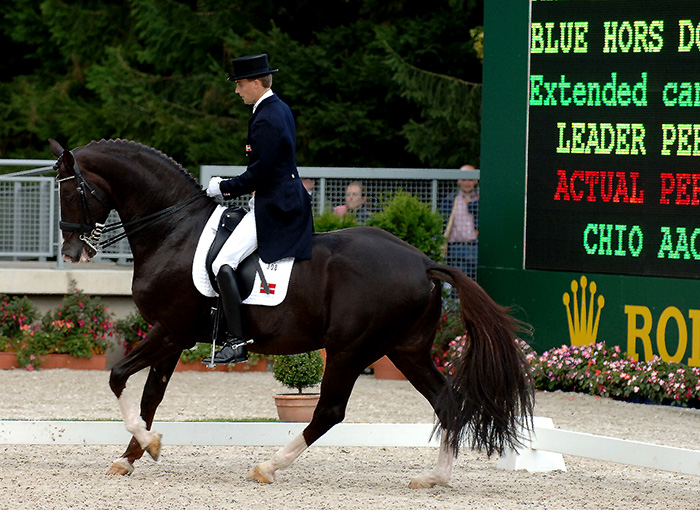
Don Schufro, tested positive
“We support openness and transparency and accordingly chose to have Don Schufro tested. It turned out – almost as expected – that he tested positive. Our knowledge about the horses’ WFFS status is an additional breeding tool which has become available that enables breeders to avoid mating of two carrier individuals. Therefore, we recommend the breeders to have their mares tested prior to the breeding season.”
And I guess, so say all of us.
POSTSCRIPT:
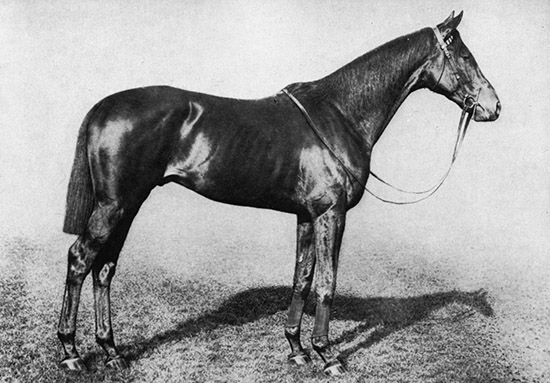
Bay Ronald – all his fault?
Blame it on Bay Ronald – or at least that’s what the Westfalien Verband believe – they think the origin of WFFS lies with the Thoroughbred Dark Ronald and his sire Bay Ronald. The Westfaliens base this on information from 2000 tested horses, provided by the Westfalien, Oldenburg and Trakener Societies, which revealed that Bay Ronald and Dark Ronald were the only stallions that appeared on the pedigrees of all the WFFS carriers.
Given that Bay Ronald was born in 1893 and Dark Ronald in 1905, and that their names appear on pedigrees throughout the Thoroughbred Stud Book and in every Warmblood Breeding society, this rather deepens than unravels the mystery. If there is a simple genetic base to the problem, then we should have over the past century seen hundreds of affected foals, and thousands of abortions. And yet only a handful of affected foals have been detected and vets who have spent a lifetime in the horse breeding industry, report that they have never had a single case. This might suggest that other factors have to be present before the genetic predisposition comes into play…
If you want to see the incredible influence of Bay Ronald, just hit this link:
Eurodressage carries commentary from Nena Winand, an American researcher into WFFS, and she stresses that the origin of the mutation occurred several hundred years before Bay Ronald was born, pointing the finger at the Arabians of the desert.
She told Eurodressage:
“The analysis of the origin of the WFFS1 mutation provided by VIT and made public by the Wesphalian Society today is misguided. The mutation was introduced into the Warmblood and Thoroughbred populations separately by the use of desert-bred Arabians that were carriers of the defect in the initial establishment of the Thoroughbred breed and by subsequent use of both Thoroughbreds and desert-bred Arabians in the various Warmblood populations.”
“Dark Ronald and/or Son of Law may have been carriers, but were not the source of the trait. Historic documentation shows that carriers were bred in the early 1800s. It is not possible to analyze Warmblood pedigrees no matter how large the sample and conclude a mutation source because multiple Arabians and Thoroughbreds, all at risk to be carriers of WFFS, were used to develop today’s horses. The same is true of Thoroughbreds, which were developed largely from multiple Arabians. One can see this if one looks at the foundation pedigrees, particularly of the Thoroughbred. It is also known that the foundation pedigrees are not completely accurate.”
“Because of the age of the mutation and the fact that any Arabian or Thoroughbred used in a Warmblood breeding program going back to minimally the Godolphin Arabian (1724) but likely much earlier. If you see how many Arabians and ‘Turks’ were used in the foundation breeding of the Thoroughbred. It may have existed in the 1600’s.”
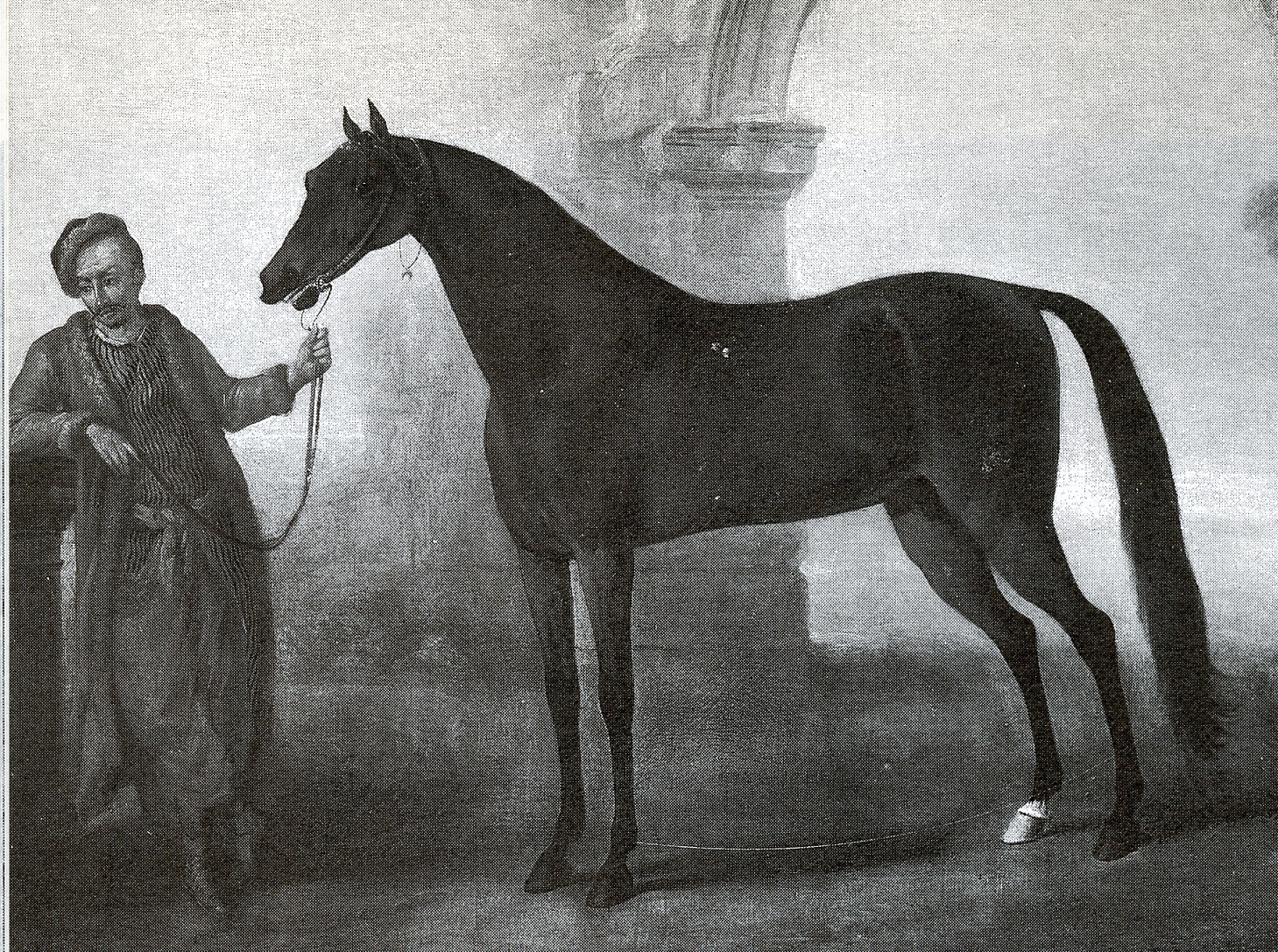
The Godolphin Arabian – his fault?
On this evidence it would seem the Thoroughbred population is riddled with WFFS, and yet, despite the fact that their foals are the most valuable, and the vets that service the Thoroughbred industry, a very elite group, they don’t seem worried by WFFS.
Curiouser and curiouser…



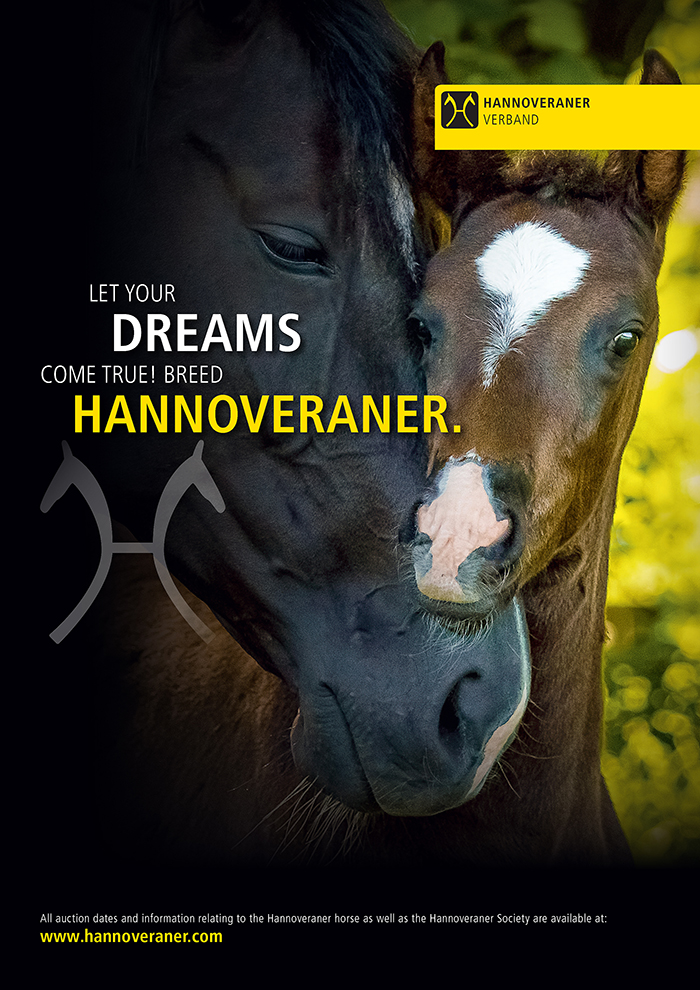
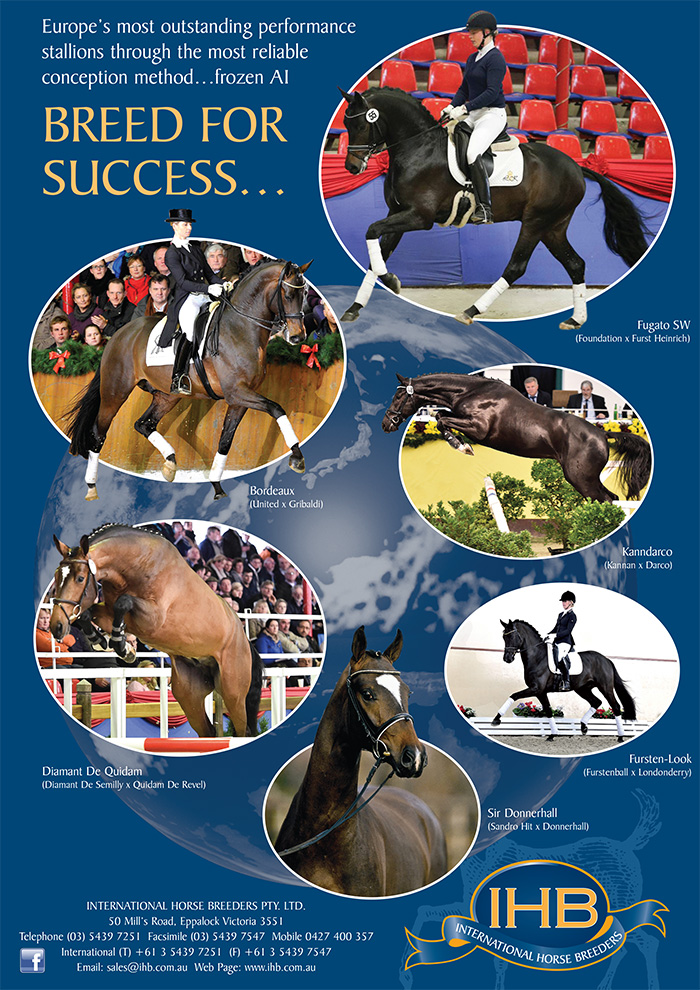
Well, we know about it, so let’s do something about it! It’a a recessive, so if a single gene, easy to obliterate…however there are different degrees of expression, so there must be modifiers. Nevertheless, eliminate the gene by including the carrier [impossible to eradicate otherwise], & you nullify the the qualifiers. Stallion owners should only use negative stallions, & insist that mares put to this stallion are likewise negative: always negative progeny from them, & then the only problem is the outliers – hopefully they will be curbed by public opinion. It would be helped by gelding all carrier male foals – not so easy with the fillies……
If, as the article points out, the gene has been around for hundreds of years in multiple breeds it would be near impossible to eradicate it.
I do think that breeding stallions should be tested and those results made public. As a mare owner, it would break my heart to have an affected foal but it is my responsibility to ensure that doesn’t happen by having my mare tested. I would then make an informed choice of stallion. I would not exclude a carrier stallion if my mare was not a carrier since the resultant foal would not be affected.
I do agree that knowing a horse’s carrier status should carry weight as to the decision to breed from them and personally, unless the mare were an exceptional horse I would not choose to breed from a mare who carried the gene.
By default, the registered stallions have already been chosen as breeders because of their superior type and in all other ways will improve the breed. Perhaps there should be more education for small scale breeders like myself (one of the outliers) to ensure that the choice of breeding mares is done with as much care as is taken by the large studs.
My decision to breed was an emotional one. I sent my mare to stud because I love her and want another just like her who will, in time, become my riding horse. I think that’s a common motivation.
As Werner Schade said, we should be breeding riding horses not breeding horses.